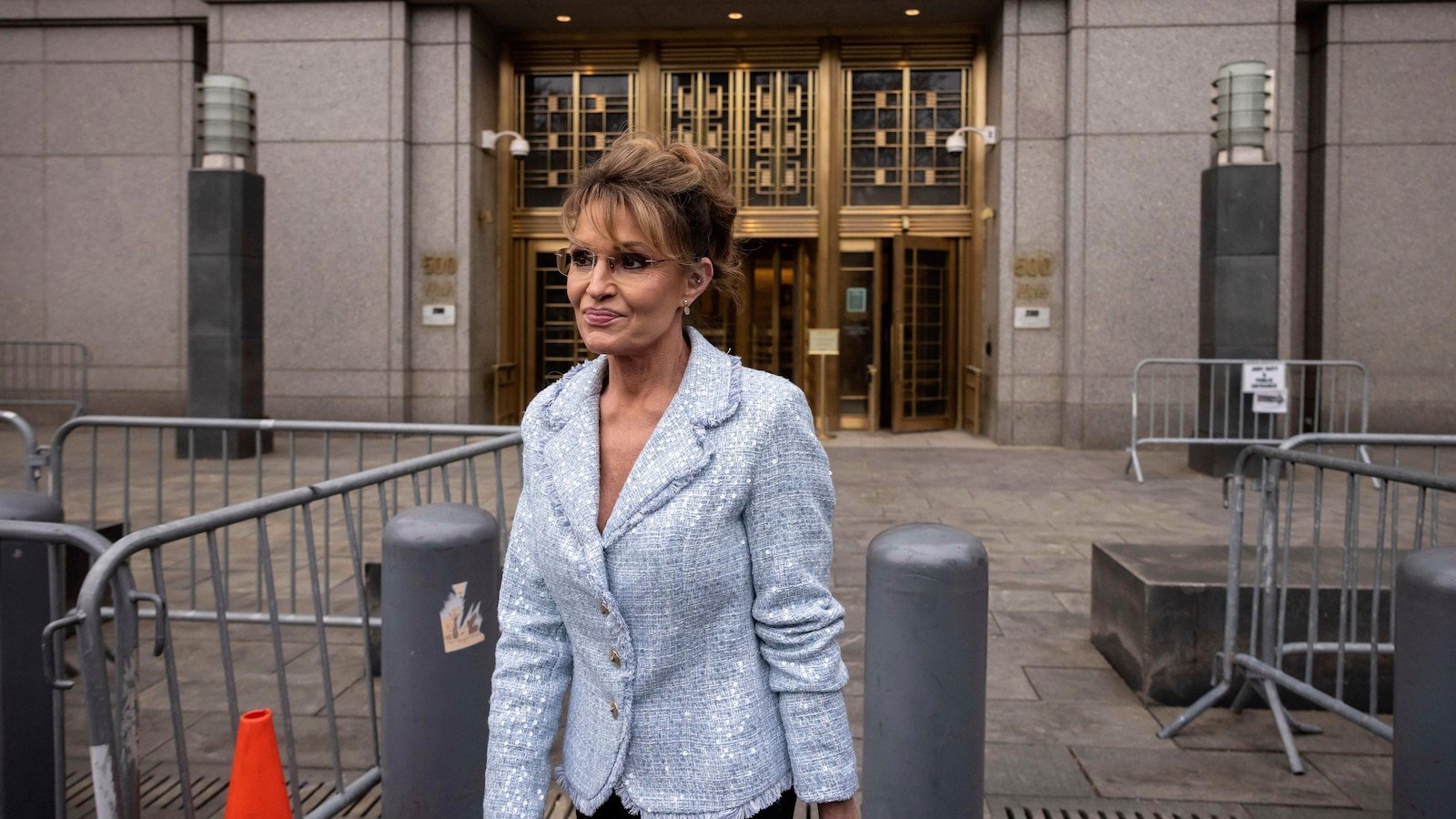New York – A jury concluded on Tuesday that the New York Times did not differ to the former governor of Alaska Sarah Palin for an error in a 2017 editorial that, according to her, damaged her reputation.
The jury deliberated just over two hours before reaching its verdict after Palin’s lawyers and the newspaper delivered final arguments in a civil trial of the Federal Court of Manhattan that it is In its second week.
Palin testified on Monday that death threats against her increased and her spirits fell after an editorial on armed violence said that her political action committee had contributed to political rhetoric that allowed an atmosphere of violence.
The Times corrected the article less than 14 hours after publication.
Kenneth Turkel, Palin’s lawyer, urged the jury to find the Times responsible for the defamation claiming that his former editor of the publishing page, James Bennet, knew that what he was publishing was wrong or acted with “reckless contempt” for the truth.
He told the jury that he should grant Palin compensatory damage for the damage caused to his private mental reputation and anguish, and added that they should “find a number and let him get a closure of this.”
“To this day, there has been no responsibility,” he said. “That’s why we are here.”
He told the jury that they were not deceived by Palin’s “inflatable” personality in the witness post.
“She doesn’t cry much,” Turkel said. “It may have been for them an honest error. For her, it was a change of life.”
Palin, who obtained a degree in journalist at the University, demanded the Times for damages not specified in 2017, approximately a decade after he broke into the national stage as the Nominated Republican Vice Presidential.
His demand arose from an editorial on the control of weapons published after the American representative Steve Scalise, a Republican from Louisiana, was injured in 2017 when a man with a history of anti-calibre activity opened fire on a practice of the Congress baseball team in Washington.
In the editorial, the Times wrote that before the mass shooting of 2011 in Arizona who seriously injured the former American representative Gabby Giffords and killed another six, Palin’s political action committee had contributed to an atmosphere of violence by circulating a map of electoral districts that put Giffords and another 19 democrats under a stylized beach.
In a correction, The Times said the publisher had “incorrectly declared that there was a link between the political rhetoric and the 2011 shooting” and that the map had described “incorrectly”.
A crying bennet He apologized with Palin from the witness post when he testified last week, saying that he was tormented by the error and worked urgently to correct it after the readers complained with the newspaper.
Felicia Ellsworth, lawyer of The Times, said the jury cannot find the newspaper or Bennet responsible because I would have to conclude that the error was intentionally published by the editors who knew it was wrong.
“There has not been a pinch of evidence that shows more than an honest error,” he said.
Ellsworth said that Bennet and the Times “corrected the album aloud, clear and fast” once the error was discovered.
The lawyer said that several times the editors consistently testified about the effort to correct the error and the importance that Palin gave him, while Palin’s claims were “backed by nothing more than his saying.”
And he pointed out that the state of Palin as a public figure meant that the jury would have to find “real malice” to find in his favor.
“For Governor Palin, this is just another opportunity to assume false news. James Bennet, the truth is important,” said Ellsworth.
In February 2022, Judge Jed S. Rakoff rejected Palin’s claims In a ruling issued while a jury deliberated. Then, the judge let the jury members issue their verdict, which was also against Palin.
The trial is happening after the Second Court of Appeals of the United States Circuit in Manhattan He restored the case last year.
The Court of Appeals said that Rakoff’s dismissal ruling joined incorrectly into the jury’s work. He also cited trial failures, saying that there was a wrong exclusion of evidence, an inaccurate jury instruction and an erroneous answer to a jury question.





